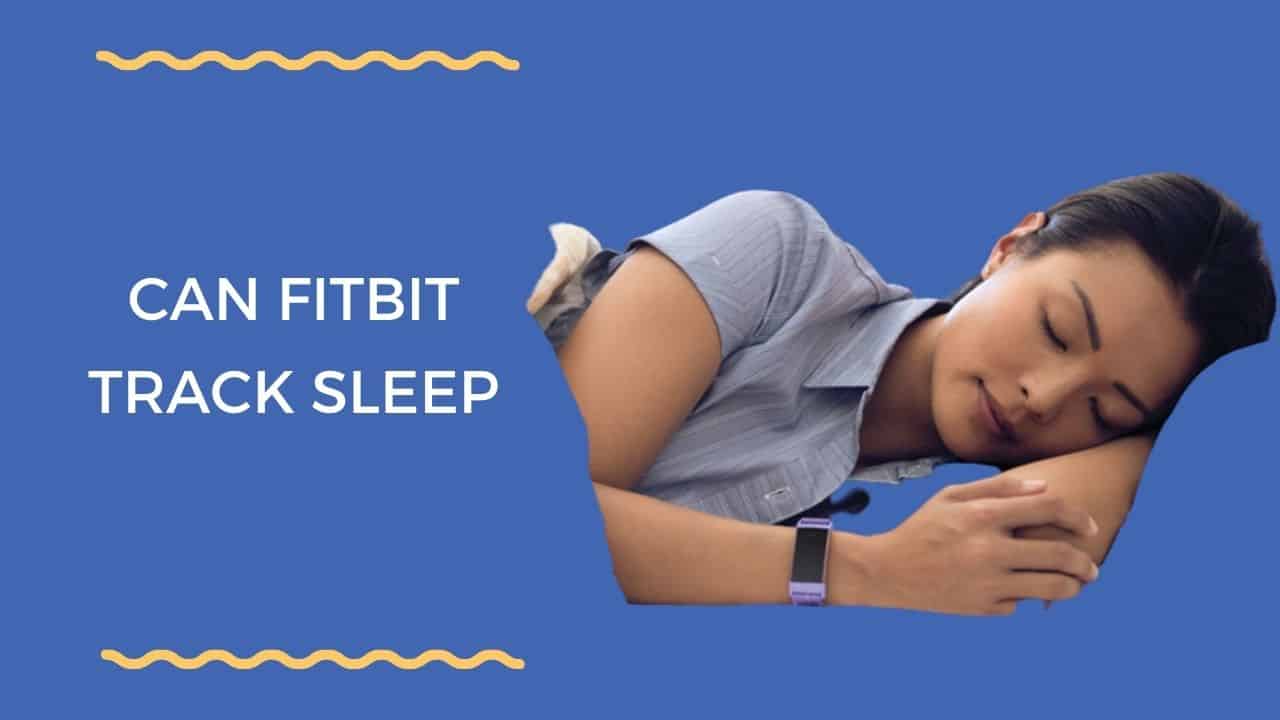It’s easy to track sleep with a Fibit fitness tracker or smartwatch. Simply wear the device to bed and it will begin to monitor your sleep in stages.
How Does Fitbit Track Sleep?
To track sleep Fitbit combines your movements with the sequence of your heartbeat. When the built-in accelerometer doesn’t detect movement your Fitbit knows you are sleeping and starts tracking sleep. When the sensor detects movements the watch knows you’ve woken up and halts sleep tracking.
As you sleep, Fitbit monitors your Heart Variability (HVR), which is affected by the 3 sleep stages including Light, Deep, and REM Sleep.
A sleep report is prepared each morning, you can view a summary of the data directly on the watch or in-depth data in the Fitbit app.
What Does Each Sleep Stage Mean?
1. Light Sleep
Light sleep is the first stage of sleep and an entry point to sleep. Here the body slows down as a result of feeling tired. Heart Rate and breathing also slow in this sleep stage. Any disturbance might wake you up while in light sleep and most importantly, the stage is responsible for physical and mental recovery.
2. Deep Sleep
In deep sleep the body is less responsive; it’s hard to wake you up. When you wake up and feel so refreshed is an indication that you entered the deep sleep stage.
Deep sleep is key because it supports the immune system, and promotes memory aspect, and physical recovery.
3. REM Sleep
In REM sleep, the eyes go behind the eyelid and the brain is active like when you are awake. Knowing whether you were in this sleep stage is simple; you can recall your dreams in detail.
How Do I See My Sleep Stages
To access your sleep data follow these simple steps;
- Launch the Fitbit app.
- Tap Sleep Duration.
- Scroll and tap Sleep Timeline and there you should see your sleep stages.
- To see additional data scroll to the bottom and tap the 30-Day Avg and Benchmark option.
How Can I See the Start and End Times of My Sleep Stages?
The start and end times are important because they give an insight into your sleep pattern. You can see the start and end of your sleep stages on the Fitbit App or website.
Fitbit App
- Once you launch the Fitbit App, tap the Today Tab and then the Sleep title.
- Tap on the record of sleep you want to view details.
- Tap the sleep graph, this expands the graph
- Long hold the sleep graph and you will see the sleep stages at different times. Apple users will need to swipe to see the time range.
Fitbit Dashboard
- Once you are logged in head to the dashboard and click the Sleep tile then See More
- Click on the sleep record you wish to see in-depth on
- Put the cursor on the sleep graph and you will see estimates of your sleep stages at different times.
Why Don’t I See My Sleep Stages Today?
You don’t see your sleep stages because your battery is critically low, charge your Fitbit to track your sleep.
Why Don’t I See My Sleep Stages for Naps?
There are no sleep stages for short periods of sleep. And that is because Fitbits need at least 3 hours of sleep to estimate any sleep data.
Can I Edit My Sleep Stages
You can manually edit your sleep stages if the sleep start and end are not correct to get a better reflection of your sleep. Editing your sleep data will result in start and end gaps in your sleep stages.
Why Do I See Awake Minutes?
A typical adult might awaken 10 to 30 times each night. And that explains why it is normal to see them awake for minutes in sleep stages.
Most of these wake-ups cannot be remembered because most of the time you fall right back to sleep without even noticing.
The more wakes you experience during your sleep the more you wake up in the morning unsatisfied with sleep.
Fitbit uses the time you spend restless and awake to total awake minutes to help you understand your sleep cycle better.

